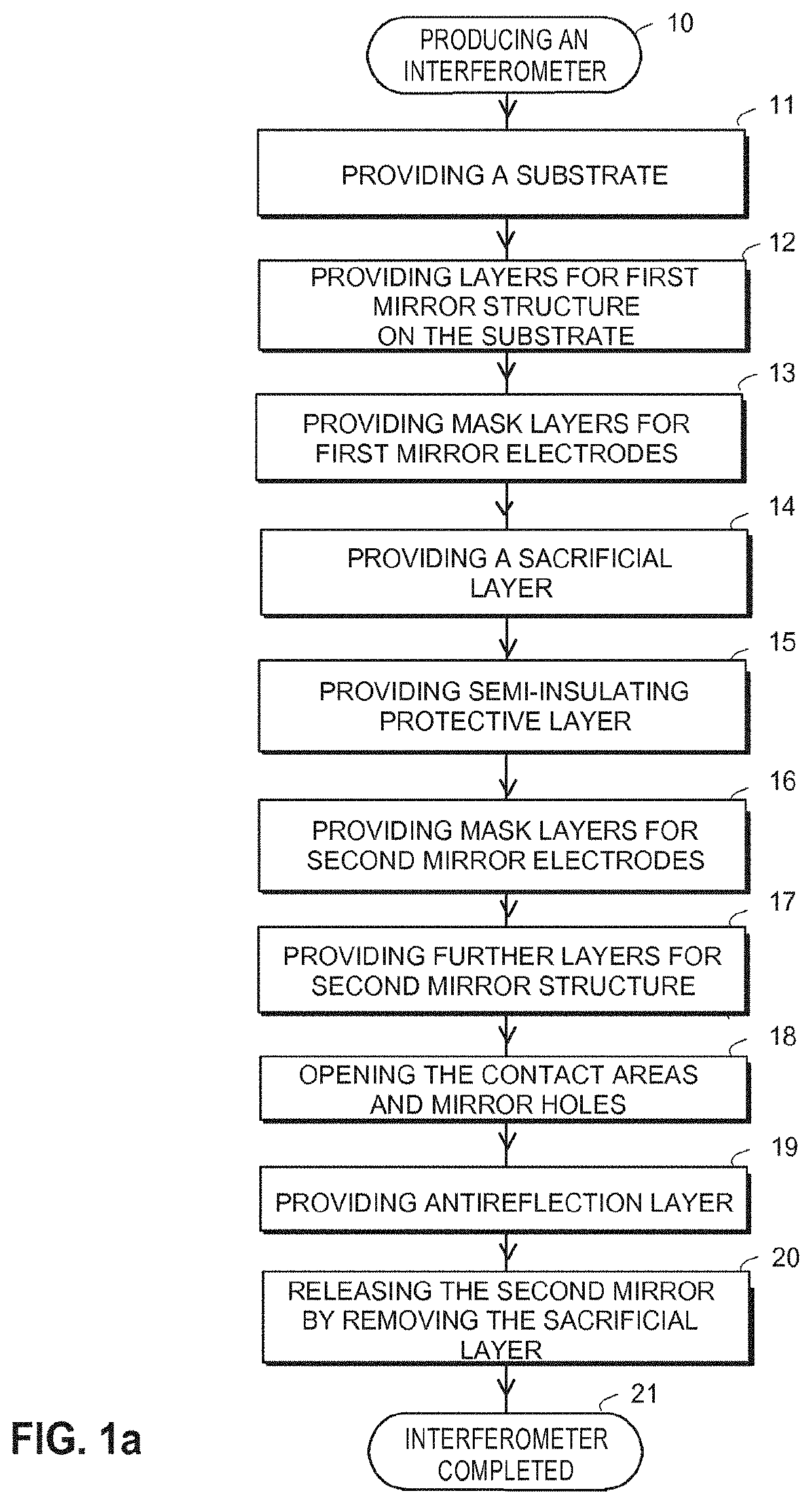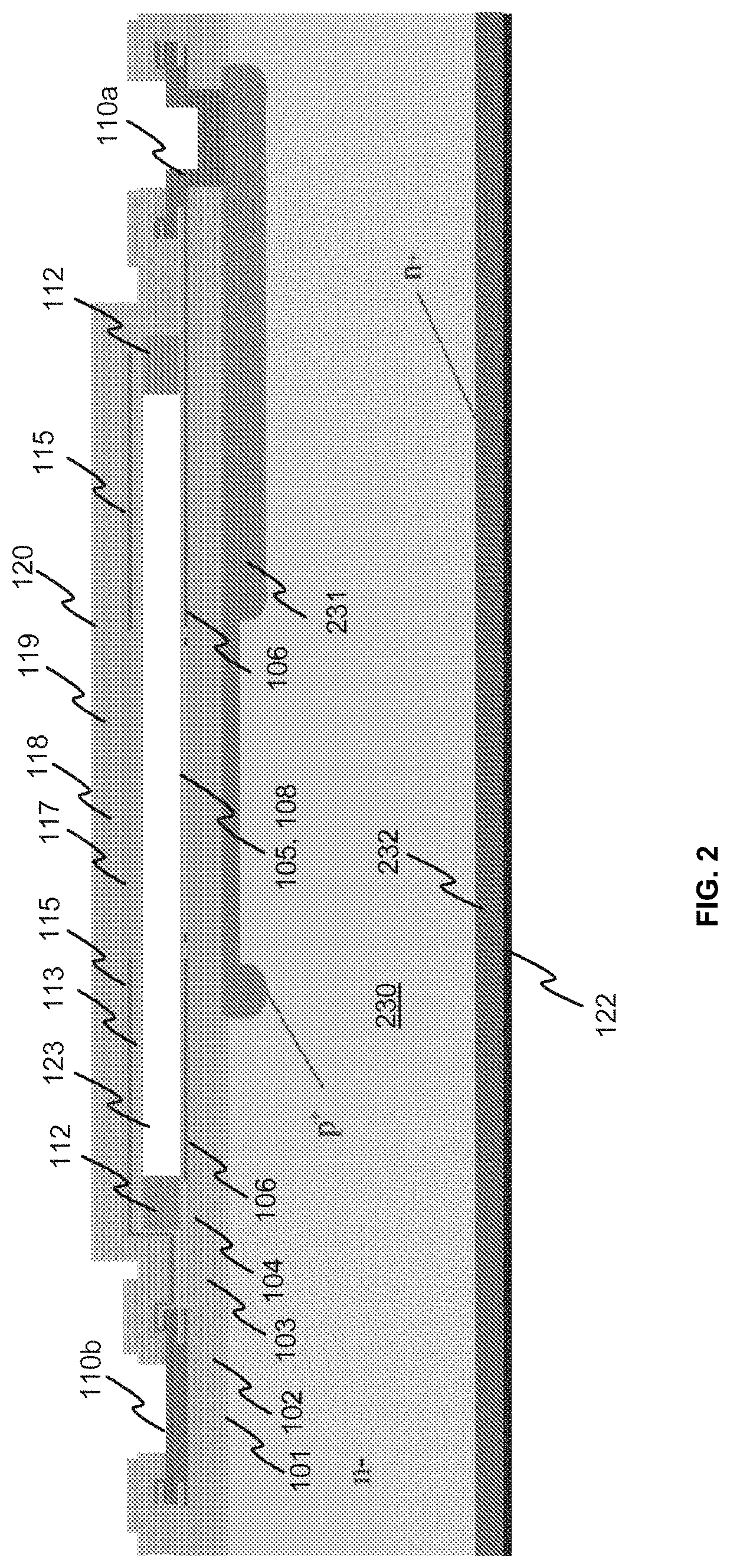Electrically tunable fabry-perot interferometer, an intermediate product an electrode arrangement and a method for producing an electrically tunable fabry-perot interferometer
a technology of fabryperot interferometer and fabryperot interferometer, which is applied in the direction of spectrum generation using multiple reflection, instruments, optics, etc., can solve the problems of increasing the complicity of the production process, increasing the sacrificial layer, and increasing the production cost, so as to prevent electrical short circuits and reduce the complexity of the interferometer production process , the effect of improving the reliability of the structur
- Summary
- Abstract
- Description
- Claims
- Application Information
AI Technical Summary
Benefits of technology
Problems solved by technology
Method used
Image
Examples
Embodiment Construction
[0055]FIG. 1a illustrates a process diagram of an exemplary method according to the invention for producing an electrically tunable Fabry-Perot interferometer. FIG. 1b illustrates cross sections of the product after certain production phases of FIG. 1a.
[0056]The production process is started by providing a wafer 100 in phase 11. The wafer material can be e.g. fused silica. In the next phase 12 layers 101-105, 108 are formed for providing layers of the first, fixed mirror structure on the substrate. The first mirror structure can be produced by e.g. depositing successive layers of titanium dioxide TiO2 and aluminium oxide Al2O3 on the substrate, phase 12. For example, there may be two layers of aluminium oxide 102, 104 between three layers of titanium dioxide 101, 103, 105. The thickness of the titanium dioxide layers can be e.g. 10 nm-2 μm, and the thickness of the aluminium oxide layers can be e.g. 10 nm-2 μm. The actual thickness of the layers depends on the materials and the ran...
PUM
| Property | Measurement | Unit |
|---|---|---|
| temperatures | aaaaa | aaaaa |
| thickness | aaaaa | aaaaa |
| temperature | aaaaa | aaaaa |
Abstract
Description
Claims
Application Information
 Login to View More
Login to View More - R&D
- Intellectual Property
- Life Sciences
- Materials
- Tech Scout
- Unparalleled Data Quality
- Higher Quality Content
- 60% Fewer Hallucinations
Browse by: Latest US Patents, China's latest patents, Technical Efficacy Thesaurus, Application Domain, Technology Topic, Popular Technical Reports.
© 2025 PatSnap. All rights reserved.Legal|Privacy policy|Modern Slavery Act Transparency Statement|Sitemap|About US| Contact US: help@patsnap.com



